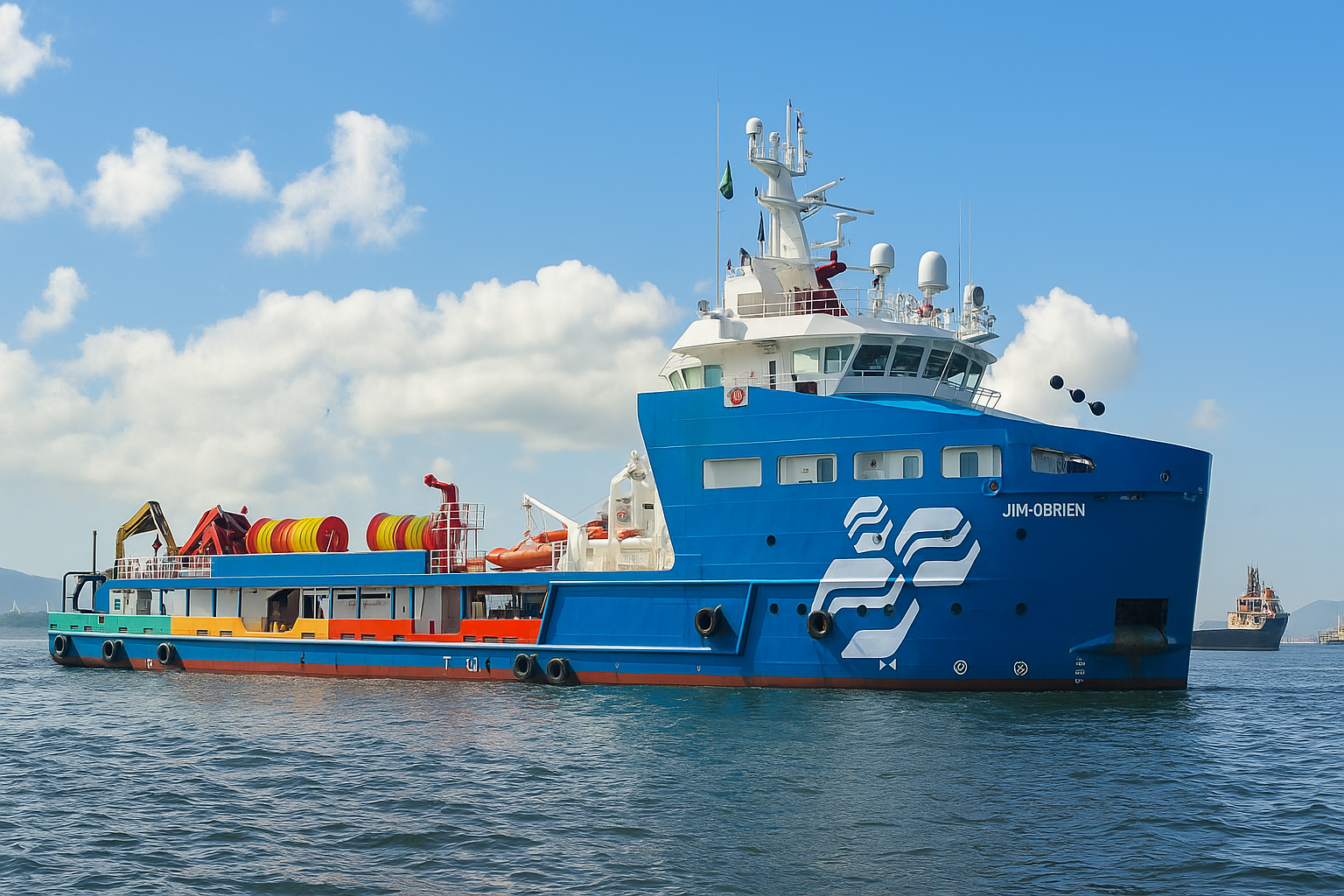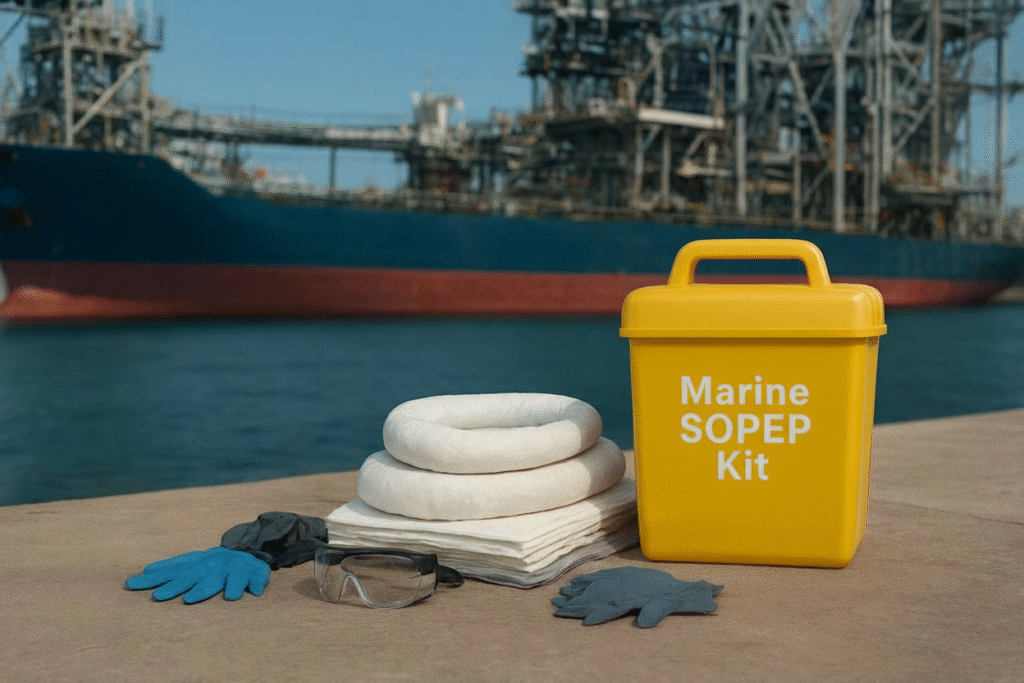
When it comes to the shipping industry, protecting the marine environment from oil pollution isn’t just a good practice, it’s a responsibility. One oil spill can have a devastating ripple effect on marine life, coastlines, seabirds, and entire ecosystems. That’s why an effective oil spill response strategy is crucial.
And at the heart of this response lies the Shipboard Oil Pollution Emergency Plan (SOPEP) – a mandatory requirement for ships under MARPOL Annex I.
This blog breaks down everything you need to know about SOPEP, why it’s essential, what goes into a marine spill kit, and how it all ties together to protect our blue planet.
What Is SOPEP?
SOPEP stands for Shipboard Oil Pollution Emergency Plan. It’s a mandatory manual for ships over 400 gross tons and all tankers, designed to guide crew members on how to respond quickly and effectively to oil spills and minimize environmental damage.
A good SOPEP plan:
- Defines clear emergency procedures.
- Outlines each crew member’s role during an incident.
- Details communication protocols.
- Lists all the spill response equipment onboard.
- Ensures compliance with International Maritime Organization (IMO) regulations.
In short, SOPEP gives a ship a clear playbook to act fast and smart when a spill happens.
Key Components of a SOPEP Plan
A well-structured SOPEP is more than a checklist – it’s a complete emergency response framework. Here are the essentials:
1. Contact Information
A list of national and local authorities, shipowners, port facilities and pollution response teams for rapid communication and coordination.
2. Oil Spill Notification Procedures
Clear steps to detect, verify, and report spills to relevant agencies without delay.
3. Spill Control Actions
Instructions to contain and control the spill source using equipment like booms, sorbents, and barriers.
4. Crew Responsibilities
Each crew member from the captain to the deckhands; has defined tasks to ensure a coordinated and efficient response.
5. Pollution Prevention Equipment
An inventory of absorbents, containment booms, PPE and other tools needed to prevent the spill from spreading further.
What’s Inside a Marine SOPEP Kit?
A marine SOPEP kit (or marine spill kit) is a ready-to-use emergency response solution stored on vessels, marinas, and offshore platforms. These kits are designed to control and clean up oil spills quickly and effectively.
A standard SOPEP kit includes:
- Personal Protective Equipment (PPE) – Ensures the safety of personnel handling the spill.
- Waste Disposal Bags – For safe disposal of used absorbents and contaminated materials.
- Containment Booms – Prevent the oil from spreading further in the water.
- Oil Absorbents – Pads, socks, and pillows to soak up spilled oil.
Many marine spill kits are:
- Stored in portable polyethylene wheelie bins for easy mobility.
- Colour-coded and clearly labelled for quick identification.
- Designed to absorb up to 190 litres of oil, fuels, or solvents.
- Equipped with floating booms to contain spills at the surface.
- Supplied with laminated instruction sheets for quick reference in an emergency.
- Available with tamper-evident seals for added security.
These kits are commonly used in fueling areas, marinas, boatyards, seaports, and offshore platforms essentially anywhere oil handling is routine.

Contents of a Standard SOPEP Manual
To make sure the response is structured and compliant, the SOPEP manual includes:
- Action Plan: Step-by-step response strategy
- Ship Information: Tonnage, discharge systems, and layout.
- Containment Procedures: Proper use of absorbents, booms, and pads.
- Equipment Inventory: List of available pollution control gear.
- Reporting Procedures: How to inform the right authorities fast.
- Technical Drawings: Fuel line and cargo system layouts.
- Record Keeping: Documentation for compliance and future reference.
Crew Training and Readiness
Even the best SOPEP plan is useless if the crew isn’t trained to execute it. That’s why practical training is critical especially in major maritime hubs, where specialized maritime safety courses teach crew members how to:
- Deploy containment booms and sorbents properly.
- Follow notification and reporting protocols.
- Handle equipment under pressure.
- Act swiftly to minimize environmental damage.
Why SOPEP and Spill Kits Matter
Oil spills can spread fast and leave long-lasting impacts.A well-implemented SOPEP plan, supported by the right marine spill kits, helps:
- Minimize ecological damage.
- Prevent costly cleanups and penalties.
- Keep your operations compliant with international regulations.
- Build trust with environmental agencies and port authorities.
FAQs About Marine SOPEP Kits
1. Is SOPEP mandatory for all vessels?
Yes. Under MARPOL Annex I, all ships over 400 gross tons and tankers must have an approved SOPEP plan.
2. How often should SOPEP equipment be checked?
Regular inspections are recommended, at least monthly to ensure the equipment is in good working condition.
3. What’s the difference between a regular spill kit and a marine SOPEP kit?
Marine SOPEP kits are specifically designed for oil spills on or near water and often include floating booms and water-compatible absorbents.
4. Can I customize my spill kit?
Yes. Depending on the type of operations and vessel, kits can include additional items like dispersants or larger boom lengths.
5. Do crew members need formal training to use a SOPEP kit?
Yes. Proper training ensures the team can respond quickly and correctly, minimizing environmental impact.
Final Thoughts
Oil spill preparedness isn’t just a regulatory requirement, it’s a commitment to safeguarding our oceans. A well-structured SOPEP plan combined with a reliable marine spill kit can make all the difference between a minor incident and a full-blown environmental disaster.
Whether you operate a marina, manage a shipping fleet, or work offshore, being prepared with the right plan and equipment is key to protecting marine ecosystems for generations to come.

